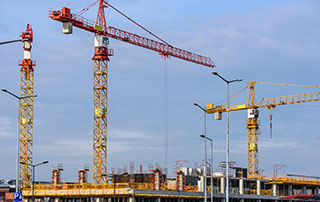The following article is resuming the main strategic and economic issues to be considered in developing new ultra-low temperature district heating (ULT DH) for new development areas. This information has been extracted from the document entitled D2.5 – Development schemes for new district heating developments.
Strategic and integrated energy planning
The economy of ULT DH in a new development area must be economical attractive for the company operating the scheme, for the customers and for the society.
Strategic energy planning is used on municipality, regional or national level to plan the most viable way to supply and use energy over a longer time horizon.
- Vision
A new development area is typically based on or linked to one or more visions. Such visions could be on global, national, regional or local level. On local level ULT DH can support visions on for instance sustainable living, use of local heat sources and clean air. In the wider scope, ULT DH can support visions on reducing CO2-emissions, phasing out fossil fuels and other climate related visions including the European Commission’s long-term vision for a prosperous, modern, competitive and climate-neutral economy by 2050 – A Clean Planet for All. Source: A Clean planet for all, 2018 [1]. - Strategy
The realization of a vision needs a strategy. Strategic energy planning is used on municipality, regional or national level to plan the most viable way to supply and use energy over a longer time horizon. Source: Strategic energy planning at municipal and regional level, 2015 [2], Regulation and planning of district heating in Denmark, 2017 [3], Varmeplan Danmark [4].
The energy planning will typically include both heating and electricity infrastructure but can also include infrastructure for transport and cooling. Taking this holistic approach different synergies and scenarios can be identified and analysed across traditional boundaries paving the way for the optimal solution for the society. ULT DH can in this respect provide energy efficient solutions for integrating surplus heat and renewables in the energy system including provide flexibility through thermal storage. The elements of strategic energy planning can also be used for a specific new development area. - Integration
In a new development area energy supply and consumption may be underprioritized in the planning process. The idea of integrated energy planning is that energy supply, energy infrastructure and final use of energy are prioritised in the overall planning process along with other infrastructure and objectives. In planning ULT DH it is very important that energy is integrated from the beginning of the planning to make sure the special requirements according to the low temperatures are taking into considerations. Also, area reservations for renewable energy sources as for instance solar thermal panels, geothermal heat or heat pumps must be included.
In planning ULT DH it is very important that energy is integrated from the beginning of the planning to make sure the special requirements according to the low temperatures are taking into considerations.
Economy

In a new development area with no prior district heating supply, the economy of the scheme must be evaluated in detail. Photo by PhotoMIX Ltd. from Pexels
The economy of ULT DH in a new development area must be economical attractive for the company operating the scheme, for the customers and for the society.
- Company
In a new development area with no prior district heating supply, the economy of the scheme must be evaluated in detail. The topology (see section 3.3) and scenarios of long-term development (see section 3.4) of the ULT scheme must be studied thoroughly to identify if investment costs, operating expenses and income from heat sales makes it a feasible business for the DH operator. - Customer
Land of a new area is typically sold to one or more developers that will manage the erection of buildings for future sale or rent. Thus, the final user of energy does not normally take decisions on the energy source for space heating, domestic hot water or cooling. It is developer’s interest to maximise profit. Therefore, much focus is on investment costs of the ULT DH at building level compared to other energy sources and solutions including traditional DH. However, the developer also needs to address future energy costs of owners or tenants – at least indicatively. This calls for a thorough comparison of the customer economy of different energy sources. From the customers point of view the price for DH should be reflected in the higher investment in equipment and the use of electricity for DHW boosting. - Society
In many cases, the difference in customer economy of different energy sources is relatively modest. Socio-economy analysis can then reveal what would be the best solution for the society. In Denmark, socio-economic calculations are used in both strategic and integrated energy planning Source: Scenarier for energiinfrastruktur [5] and would also be a valid tool, to evaluate ULT DH. Danish municipalities are using socio-economic calculations in their heat planning. Source: How Danish communal heat planning empowers municipalities and benefits individual customers, Anna Chittum, Poul Alberg Østergaard [6]. The Danish Energy Agency is providing an international spreadsheet calculation tool to perform socio-economic calculations. Source: District heating assessment tool (DHAT) [7]
